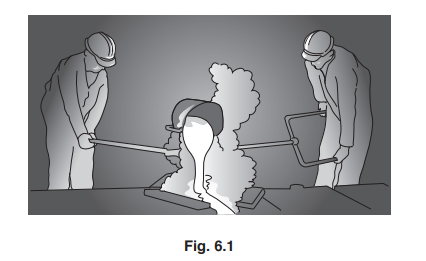Question
(a) On a hot day, sweat forms on the surface of a person’s body and the sweat evaporates.
Explain, in terms of the behaviour of molecules,
(i) the process of evaporation,
(ii) how this process helps the body to cool down.
(b) The temperature of a person of mass 60 kg falls from 37.2 °C to 36.7 °C.
(i) Calculate the thermal energy lost from the body. The average specific heat capacity of the body is 4000 J / (kg °C).
thermal energy lost = ………………………………………..
(ii)The cooling of the body was entirely due to the evaporation of sweat.
Calculate the mass of sweat which evaporated. The specific latent heat of vaporisation of sweat is 2.4 × \(10^5\) J / kg.
mass =……………………………………
Answer/Explanation
Answer:
(a) (i) and (ii) marked together to maximum of 3 marks
(i) molecules escape/leave the liquid/form gas or vapour
(ii) evaporation OR heat/(thermal) energy needed for evaporation leaves sweat cooler fast(er) molecules/high(er) energy molecules escape
OR slow(er) molecules left behind heat flows from body to warm the sweat (so body cools)
(b) (i) (Q =) mc∆θ OR mcT OR 60 × 4000 × 0.50 1.2 × \(10^5\) J / 120 kJ
(ii) Q = mL in any form OR (m =) Q/L OR either with numbers (m = 1.2 × 105 / 2.4 × \(10^6\) =) 0.05 kg e.c.f from (b)(i)
Question
Fig. 6.1 shows workers pouring liquid metal.
(a) The metal changes from hot liquid to cool solid.
Describe what happens to the arrangement, separation and motion of the atoms as the metal changes from hot liquid to cool solid.
(b) The workers cool their tools in water. They spill some water onto the floor but later the floor is dry.
Explain what happens to the water. State the name of the process.
explanation ………..
process ……….
Answer/Explanation
Answer:
(a) more regular/uniform arrangement/fixed position owtte
separation between atoms decreases/move closer/tightly packed
slower moving atoms/atoms vibrate (more slowly)
(b) (water) molecules gain energy (from surroundings)
molecules escape from a liquid (surface)
evaporation
